Jeep Compass vs smart #5 – Differences & prices compared
Both models have their strengths – but which one suits you more?
Compare performance, efficiency, price and space directly: Jeep Compass or smart #5?
Costs and Efficiency:
Price and efficiency are often the first things buyers look at. Here it becomes clear which model has the long-term edge – whether at the pump, the plug, or in purchase price.
Jeep Compass has a slightly advantage in terms of price – it starts at 34200 £, while the smart #5 costs 39300 £. That’s a price difference of around 5142 £.
In terms of energy consumption, the advantage goes to the Jeep Compass: with 17.50 kWh per 100 km, it’s slight more efficient than the smart #5 with 18.40 kWh. That’s a difference of about 0.90 kWh.
As for range, the smart #5 performs a bit better – achieving up to 590 km, about 90 km more than the Jeep Compass.
Engine and Performance:
Power, torque and acceleration say a lot about how a car feels on the road. This is where you see which model delivers more driving dynamics.
When it comes to engine power, the smart #5 has a convincingly edge – offering 646 HP compared to 240 HP. That’s roughly 406 HP more horsepower.
In acceleration from 0 to 100 km/h, the smart #5 is decisively quicker – completing the sprint in 3.80 s, while the Jeep Compass takes 7.30 s. That’s about 3.50 s faster.
In terms of top speed, the smart #5 performs barely noticeable better – reaching 210 km/h, while the Jeep Compass tops out at 200 km/h. The difference is around 10 km/h.
There’s also a difference in torque: smart #5 pulls decisively stronger with 710 Nm compared to 345 Nm. That’s about 365 Nm difference.
Space and Everyday Use:
Cabin size, boot volume and payload all play a role in everyday practicality. Here, comfort and flexibility make the difference.
Both vehicles offer seating for 5 people.
In curb weight, Jeep Compass is distinct lighter – 1575 kg compared to 2200 kg. The difference is around 625 kg.
In terms of boot space, the smart #5 offers a bit more room – 630 L compared to 550 L. That’s a difference of about 80 L.
In maximum load capacity, the smart #5 performs slight better – up to 1530 L, which is about 143 L more than the Jeep Compass.
When it comes to payload, smart #5 hardly perceptible takes the win – 502 kg compared to 470 kg. That’s a difference of about 32 kg.
Who comes out on top?
Overall, the smart #5 shows itself to be dominates this comparison and secures the title of DriveDuel Champion.
It convinces with the more balanced overall package and proves to be the more versatile choice for everyday use.
smart #5
Jeep Compass
The Jeep Compass combines a rugged aesthetic with modern sophistication, making it a standout choice in the compact SUV segment. Its robust design is complemented by a comfortable interior that offers ample space and cutting-edge technology for a seamless driving experience. Whether tackling urban environments or venturing off-road, the Compass provides versatility and reliability, embodying the adventurous spirit synonymous with the Jeep brand.
details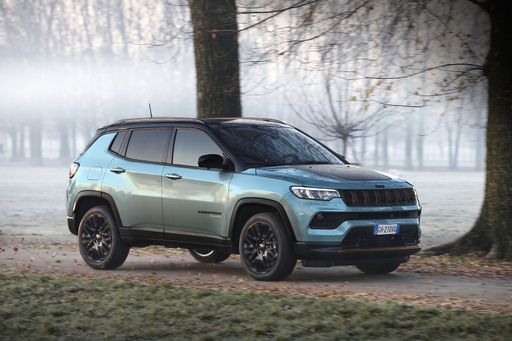 @ media.stellantis.com
@ media.stellantis.com
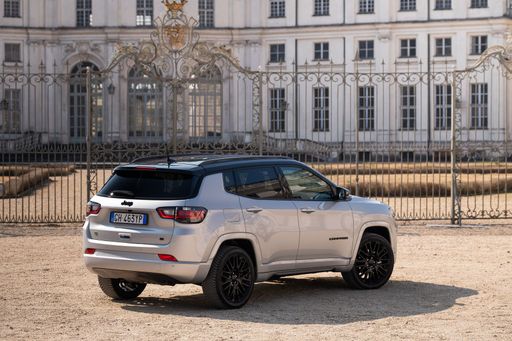 @ media.stellantis.com
@ media.stellantis.com
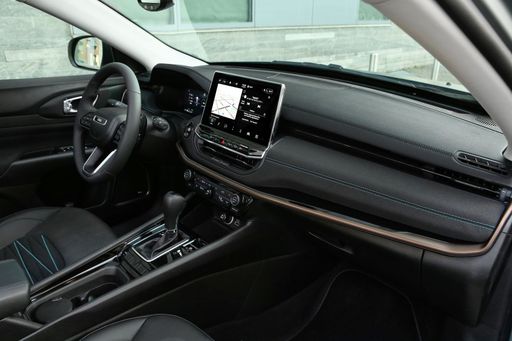 @ media.stellantis.com
@ media.stellantis.com
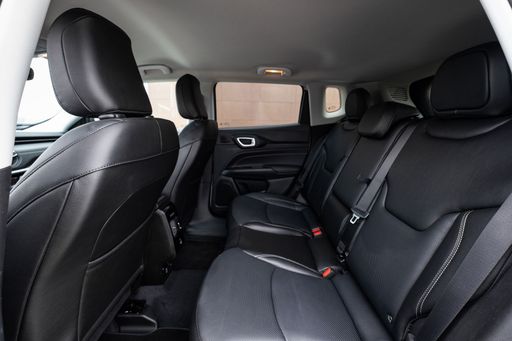 @ media.stellantis.com
@ media.stellantis.com
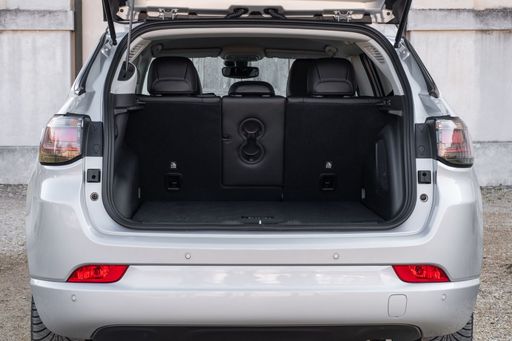 @ media.stellantis.com
@ media.stellantis.com
smart #5
The Smart #5 continues to build on the brand's legacy of compact and efficient urban vehicles, now infused with a more modern and stylish design. Its sleek appearance is complemented by a spacious interior, offering comfort without compromising its compact nature. This model is ideal for city dwellers seeking a blend of innovation, practicality, and style in their daily drives.
details

|
|
|
|
|
Costs and Consumption |
|
|---|---|
|
Price
34200 - 46900 £
|
Price
39300 - 52200 £
|
|
Consumption L/100km
2 - 5.9 L
|
Consumption L/100km
-
|
|
Consumption kWh/100km
17.50 kWh
|
Consumption kWh/100km
18.4 - 19.9 kWh
|
|
Electric Range
36 - 500 km
|
Electric Range
465 - 590 km
|
|
Battery Capacity
74 kWh
|
Battery Capacity
74.4 - 94 kWh
|
|
co2
0 - 133 g/km
|
co2
0 g/km
|
|
Fuel tank capacity
36 - 55 L
|
Fuel tank capacity
-
|
Dimensions and Body |
|
|---|---|
|
Body Type
SUV
|
Body Type
SUV
|
|
Seats
5
|
Seats
5
|
|
Doors
5
|
Doors
5
|
|
Curb weight
1575 - 2198 kg
|
Curb weight
2200 - 2378 kg
|
|
Trunk capacity
420 - 550 L
|
Trunk capacity
630 L
|
|
Length
4404 - 4552 mm
|
Length
4695 mm
|
|
Width
1819 mm
|
Width
1920 mm
|
|
Height
1629 - 1675 mm
|
Height
1705 mm
|
|
Max trunk capacity
1230 - 1387 L
|
Max trunk capacity
1530 L
|
|
Payload
465 - 470 kg
|
Payload
475 - 502 kg
|
Engine and Performance |
|
|---|---|
|
Engine Type
Petrol MHEV, Plugin Hybrid, Electric
|
Engine Type
Electric
|
|
Transmission
Automatic
|
Transmission
Automatic
|
|
Transmission Detail
Dual-Clutch Automatic, Automatic Gearbox, Reduction Gearbox
|
Transmission Detail
Reduction Gearbox
|
|
Drive Type
Front-Wheel Drive, All-Wheel Drive
|
Drive Type
Rear-Wheel Drive, All-Wheel Drive
|
|
Power HP
130 - 240 HP
|
Power HP
340 - 646 HP
|
|
Acceleration 0-100km/h
7.3 - 10.3 s
|
Acceleration 0-100km/h
3.8 - 6.9 s
|
|
Max Speed
180 - 200 km/h
|
Max Speed
200 - 210 km/h
|
|
Torque
230 - 345 Nm
|
Torque
373 - 710 Nm
|
|
Number of Cylinders
4
|
Number of Cylinders
-
|
|
Power kW
96 - 177 kW
|
Power kW
250 - 475 kW
|
|
Engine capacity
1199 - 1469 cm3
|
Engine capacity
-
|
General |
|
|---|---|
|
Model Year
2024 - 2025
|
Model Year
2025
|
|
CO2 Efficiency Class
D, B, A
|
CO2 Efficiency Class
A
|
|
Brand
Jeep
|
Brand
smart
|
What drivetrain options does the Jeep Compass have?
The Jeep Compass is available as Front-Wheel Drive or All-Wheel Drive.
The prices and data displayed are estimates based on German list prices and may vary by country. This information is not legally binding.
